I’m well aware of the awkward timing of this blog, given recent events. Originally, I’d intended to have this up the week prior. Circumstances of the lazy kind prevented me from finishing it by then. So, here it is, now. And, yes, I will be addressing the really shaky subject matter toward the end. But please allow me to start from the rather pleasant beginning . . .
Three years ago, I had the distinct pleasure of trying my second tea from Nepal. It was from a tea estate dubbed Ilam Chiyabari. I tried to locate it via Google Maps at the time, but found no information on it. After posting a review of said second flush black tea, I actually received a comment from one of the co-owners of the estate – Bachan Gyawali. He said that Ilam Chiyabari was a new outfit, but that he (and his brother, Lochan) also owned a sister tea estate called Jun Chiyabari – located in Eastern Nepal.
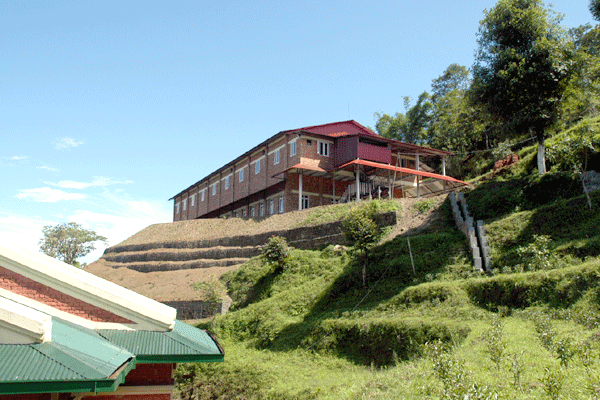
Mere months later, I had a chance to try something from the sister estate, a green tea called “Himalayan Evergreen”. I remember being floored by it. Years would pass before teas from that estate would once again grace my cup. Niraj Lama, o’ he of Happy Earth Tea, informed me that he’d acquired a few teas from said estate, and that they were en route to me as he was writing the e-mail. Two black teas, one oolong and a green tea.
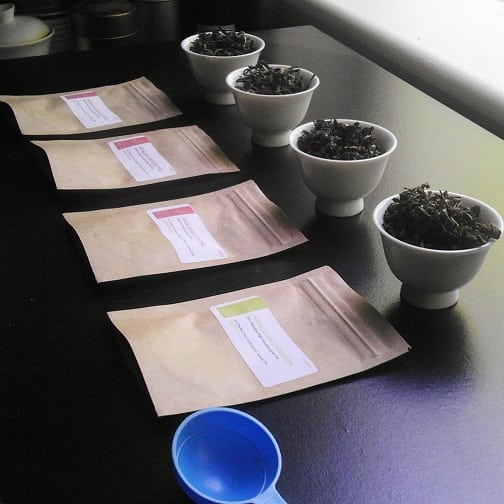
Needless to say I was excited. For two reasons: (1) I wanted to get a better idea of the other teas the estate produced, and (2) I was looking forward to writing a Happy Earth Tea-based blog that didn’t involve dwarves . . . or my brother’s dog. (Long stories; both of them.)
At the time I tried this, I had no idea it was a variation of the same green tea I sampled three years ago. As with most of the Jun Chiyabari offerings, this was from the autumn 2014 harvest. And like the other teas, their appearance was indicative of the overall style of the Nepalese estate’s technique. The leaves were small, obviously hand-rolled, and – as the name suggests – green. Unlike the other teas, though, the leaves were far greener, and that also showed in the scent, which was herbaceous and sweet – like a Chinese Xue Ya green tea.
For brewing, I went for a light approach – even by green tea standards. I heated water to roughly 175-ish F, used around a teaspoon of leaves and a 6oz. steeper cup. For the safe side of steeping, I went with a three-minute infusion.
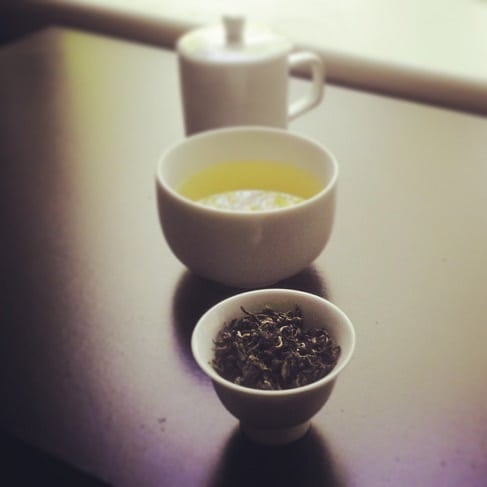
The results were . . . magnificently pleasant. There was a grassy, buttery introduction that transitioned (creamily!) to a floral conclusion. If there was a top note, I didn’t notice it amidst curling up in an evergreen electric blanket of pleasantness. This was terribly pleasant afternoon comfort food.
Himalayan Oolong
Believe it or not, I’m a bit of an old hat at Himalayan oolongs. I’ve had several over the course of years, and no two are the same. Some are ball-rolled, others are deeply roasted. If one is looking, they can spot a common terroir-related characteristic. But other than that, they’re all quite different. This was no exception.
On appearance, it was like looking at a Darjeeling that’d been coiled like a Chinese Bi Luo Chun. The color of the leaves was distinctly oolong, though – soft greens to hues of purple and brown. A veritable menagerie of mid-oxidation. The aroma also exuded this with a floral, slightly fruity, and almond-like presence.
For brewing, I went with a Darjeeling-ish approach. I brought water to a boil, let it cool for a minute or two, then poured it over 1 tsp. of leaves in a 6oz. steeper cup.
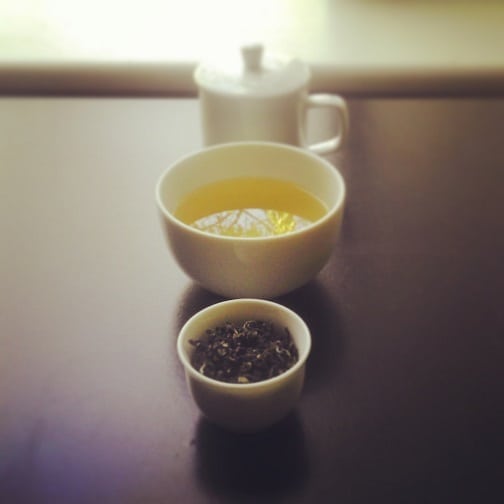
The results were really peculiar – in a good way. The liquor brewed light amber with an aroma of wine grapes and wilderness flowers. On taste, that’s where things got really confusing. The introduction was all grape, but then it settled down into something more resonant – not exactly floral, not exactly earthy. I would say, close to aromatic, like a Taiwanese oolong but with a Himayalan bend. The finish was light and creamy.
The leaves for the Himalayan Bouquet were twisty in a hand-rolled sort of way – like an oolong, half-balled. Colors on display ranged from brown to green, to shades of white tea pale. I even spotted some downy furs on some of the lighter leaves. The aroma they gave off was straight nuts and . . . mocha? Chocolate but with a kick.
For brewing, I treated this as any other black tea – a tablespoon of leaves in a 12oz. mug of boiling water for three minutes. I assumed that the liquor would color as soon as I touched-down my little strainer ball. Not the case. The water didn’t start infusing color until well into a minute of steeping. That had me worried.
Then I put nose to cup.
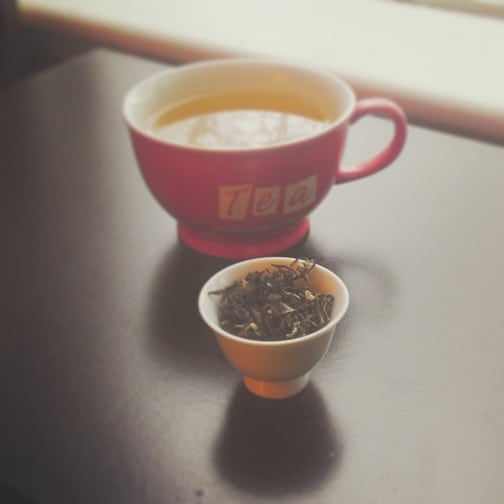
The smell of nuts was strong with this one. The liquor did end on a pale note – Darjeeling first flush light, on the subtler side of amber. To the taste, though, my eyes widened a little; one brow furrowed. Almonds were the introduction, followed by delightfully floral middle, and it trailed off with a faint astringency that settled on something herbaceous. Had this been a blind man, I thought I would’ve tasted a nuanced Darjeeling oolong.
The leaves for this offering were different from its other numbered sibling, but not in the appearance. Both the #130 and the #153 looked the same – hand-rolled curly-cue leaves of varying colors. Where they differed was the smell. This possessed more of a traditional, malty black tea aroma, where the #130 was more . . . Spring-like?
I brewed it like I did everything else, boiled water, three-minute steep, 1 tsp., 6oz. steeper cup . . . etc. . . . yadda-yadda . . . ad infinitum.
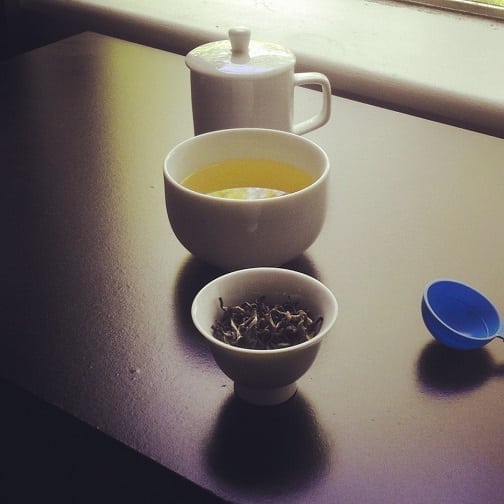
The liquor brewed up light amber, just like every other medium-bodied Jun Chiyabari offering. On sight alone, I wouldn’t be able to tell both Bouquets – or the estate oolong, for that matter – a apart. The difference was in the aroma. This had a much deeper aroma and a slightly burlier presence. That also showed up on taste, delivering a bit more astringency at the forefront, followed by a toastier top note, and trailing off into a sea of almonds and flowers.
Just like three years ago, the one that floored me the most again was the Himalayan Evergreen. It had all the things I looked for in a green tea – that being it had nothing in common with typical green teas. Hard to believe, but green tea really isn’t my favorite type of tea. Sure, there are those I like, but I tend to gravitate towards . . . well . . . anything else. To find a green tea I like, let alone one I love is a rare thing, indeed. All the Jun Chiyabari teas were great, but the Evergreen was exceptional.
As I said above, I meant to have this article up a week ago, but then on Saturday (April 25th, 2015) a devastating earthquake devastated the capital city of Kathmandu and surrounding areas. The impact was felt all the way to India. I was at work at the time, and first learned of it from Facebook. Folks I knew (or knew of) in the region were checking in, informing everyone that they were safe.
After getting off shift, I took to Twitter to learn more. Amidst my various inquiries, I actually received a reply to one of my pings from the Jun Chiyabari estate itself:

Relief tugged at my heart. A simple reply – a mere few characters – reminded me that regardless of vast distances, we’re all connected. Whether by chord . . . or cup.
